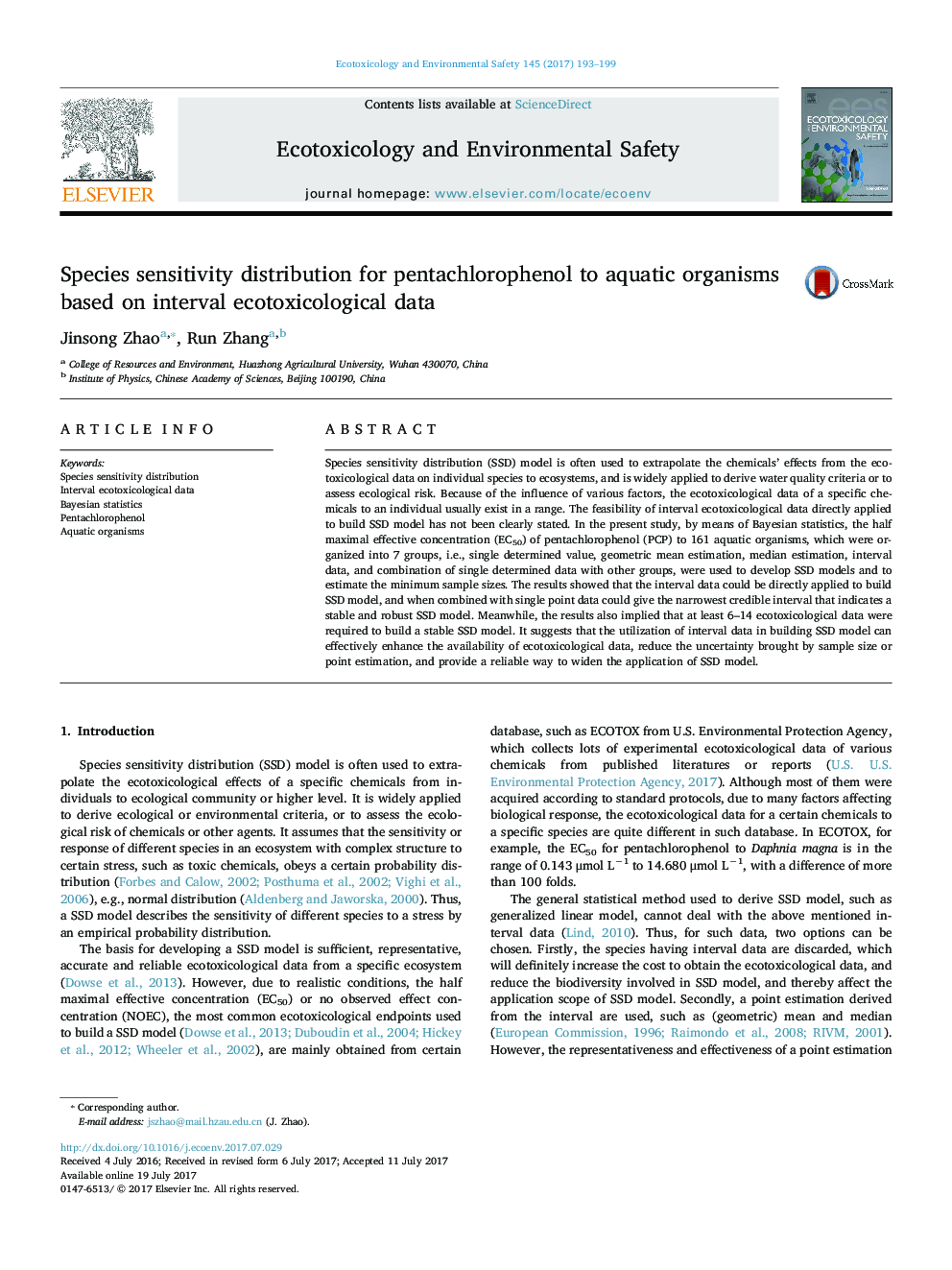| Article ID | Journal | Published Year | Pages | File Type |
|---|---|---|---|---|
| 5747716 | Ecotoxicology and Environmental Safety | 2017 | 7 Pages |
â¢Species sensitivity distribution models were developed based on interval data.â¢Bayesian statistics was adopted to build the model with interval data.â¢Utilization of interval data added values to applications of the model.â¢Minimum sample size based on interval data was estimated with Bayesian statistics.
Species sensitivity distribution (SSD) model is often used to extrapolate the chemicals' effects from the ecotoxicological data on individual species to ecosystems, and is widely applied to derive water quality criteria or to assess ecological risk. Because of the influence of various factors, the ecotoxicological data of a specific chemicals to an individual usually exist in a range. The feasibility of interval ecotoxicological data directly applied to build SSD model has not been clearly stated. In the present study, by means of Bayesian statistics, the half maximal effective concentration (EC50) of pentachlorophenol (PCP) to 161 aquatic organisms, which were organized into 7 groups, i.e., single determined value, geometric mean estimation, median estimation, interval data, and combination of single determined data with other groups, were used to develop SSD models and to estimate the minimum sample sizes. The results showed that the interval data could be directly applied to build SSD model, and when combined with single point data could give the narrowest credible interval that indicates a stable and robust SSD model. Meanwhile, the results also implied that at least 6-14 ecotoxicological data were required to build a stable SSD model. It suggests that the utilization of interval data in building SSD model can effectively enhance the availability of ecotoxicological data, reduce the uncertainty brought by sample size or point estimation, and provide a reliable way to widen the application of SSD model.
Graphical abstractDownload high-res image (219KB)Download full-size image
